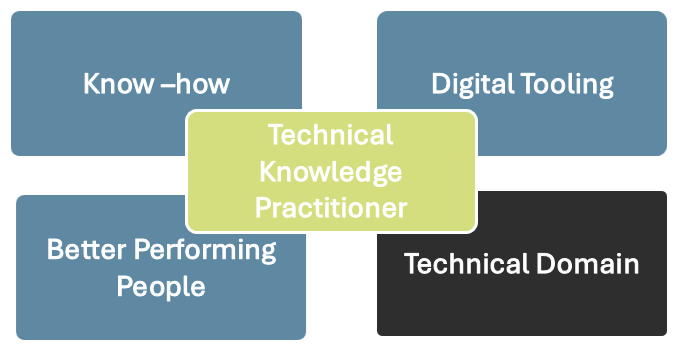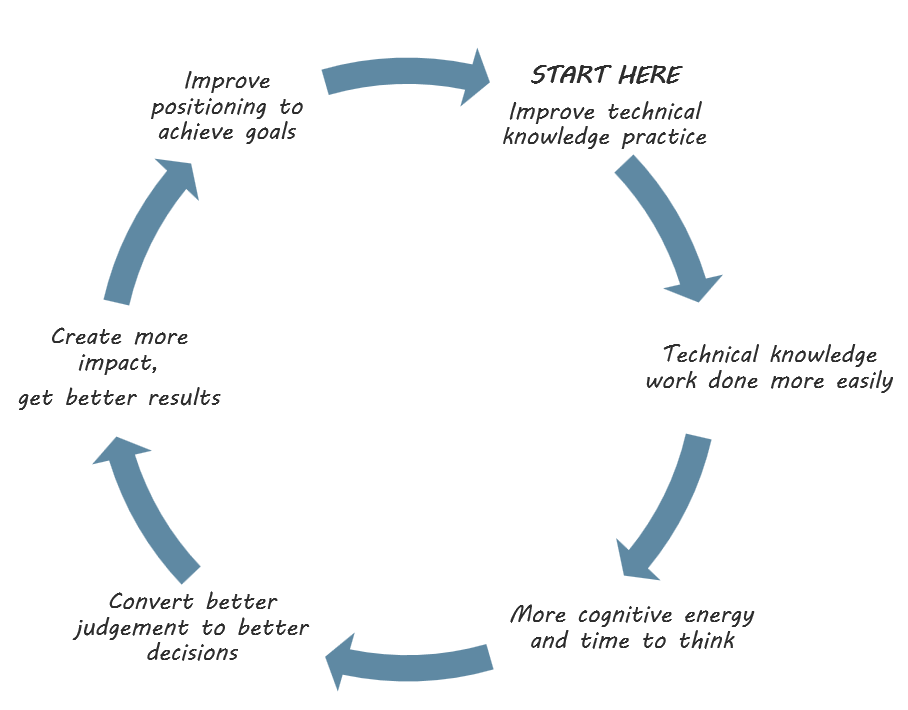'Only as good as your last landing?'
Practice-based fluency for engineers and technical specialists working with AI and digital tools /// An open source framework to upskill fast /// A flywheel of compounding gains for each element of our technical knowledge practice.

In the early part of my career, I was lucky enough to work in commercial aviation training. The crew room was the hub of activity, full of experienced aviators who had flown the iconic Spitfire, early military jets, civilian airliners and some of the latest aircraft. Some were quiet owners of, more than one, Baker Hughes neck tie(s)...sent by the manufacturer of ejection seats after the successful use of their product.
Wisdom and know-how had been hard-earned. It was as much built on those who weren't in the room as those who were.
The environment saw these hard-won pearls of wisdom passed on to the next generation of aviators through acronyms and the best - comical quips mentioned in passing, but that stuck like glue. One that always stood out was
" You are only as good as your last landing".
It was delivered by instructors to remind students that currency of skill, focus and practice are critical to a successful career in the cockpit. In many ways, the quality of a landing has a disproportionate influence on the quality of the flight and how it is remembered by passengers, crew and, on occasion, the engineering department.
As Charlie Munger points out in Poor Charlie's Almanack (Talk Five) professionals in other disciplines have much to learn from practice-based training such as that provided in pilot and medical training. Coining the term 'practice-based fluency'.
From my experience of moving from the aviation industry to engineering, I tend to agree. Driven by acute need, these disciplines are more advanced in their approach to maintaining a high level of practice. There have been positive changes in engineering in this direction, including regular checks of CPD (Continued Professional Development) on registered engineers.
However, the use of AI in engineering and technical disciplines is increasing rapidly. For us to be equipped with the skills required to operate this technology safely and effectively, a more rigorous look at practice-based fluency is urgently required. Both, as individuals and organisations.
A further point made by Charlie Munger, and topic he attributed to his success in the business domain, is the need for multi-disciplinary thinking and use of a lattice work to structure mental models to support decision-making. Part of the success of aviation practice based fluency is the multi-disciplinary nature of the foundational training, recurrent training and post-mortem level approach to industry incidents.
Topics such as human factors (including working with automation), flight systems, law, weather etc are all explored to improve better safety, performance and ultimately crew decision making.
Richard Hamming highlighted the relevance of this to Engineering:
"...you must concentrate on fundamentals, at least what you think at the time are fundamentals, and also develop the ability to learn new fields of knowledge when they arise so you will not be left behind, as so many good engineers are in the long run."
- (Richard W. Hamming and Bret Victor, The Art of Doing Science and Engineering)
With the increasing capability of AI, the challenge for engineers is changing rapidly. AI, and Agentic AI can transform the most engineering and technical roles significantly. We are starting to see this in the software world with companies like NVIDA expecting employees to have 100s of AI agents each, all with the capability to communicate with other agents. Reid Hoffman summarised this as "[for] a lot of jobs, the human will be replaced by humans [working] with AI". We want to be the humans working well with AI.
These changes bring risk to engineering and technical domains. A challenge the aviation industry has, in part, been navigating since the introduction of the early autopilots. In particular, the risks to decision making, distraction, reduced collective technical competence, digital tool dependency and seeking out hidden risks. We can continue to learn from aviation and transfer this knowledge with adaptation for technical domains and AI to mitigate risks and leverage the technology for opportunities.
The use of the 'T or Pie shaped' model to capture the competencies for technical people is well established. The horizontal axis represents the soft skills, and the vertical axis represents specialist technical subjects. The introduction of AI requires us to develop AI-literacy in both axes to be successful. Enabling us to collaborate more closely with digital teams and the ability to design and build AI agents using no or low code.
We need to work with the technology to multiply our outputs and impact. In turn, we need to collaborate with AI, build agents, manage the information it uses, write prompts and check the output produced before making decisions. We can summarise this as becoming a competent human-in-the-loop. A core skill we need to acquire rapidly as engineers who work with AI.
As pilots are aware, these new skills come with a currency requirement to continually learn and rapidly adapt to new risks and opportunities (Dobbe, 2022 p.9). The pace of change, the capability of AI and digital tools it integrates with, make current practice-based fluency increasingly relevant to technical professionals.
To support with this, we are working on a framework for engineers and technical specialists to realise current practice-based fluency when working with AI. Our framework, a community lattice work if you like, has the principles of holistic, integrated and responsible use of AI at its core to improve technical knowledge practice:
- supporting people (humans) to perform consistently better through the length of their career - Better Performing People
- the mechanics of working well with information and knowledge, and practical application of this - Know-how
- selection, use and adaption of digital tools to support the practice - Digital Tooling
- Integration and application of these three topics to their specific technical domain and circumstance.

The intention - to drive a flywheel of compounding small gains in each element of our technical knowledge practice. Making the work our respective technical domains easier with more impact at each step:

How good was your last landing? What are you doing to improve your next one? (and those of others around you?)
Want to know more about improving your practice, get in touch or sign up to our free newsletter or sub subscribe for paid member benefits.